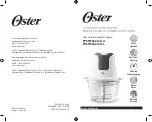
Enhanced Synchronous Serial Interface (ESSI)
ESSI Programming Model
MOTOROLA
DSP56309UM/D 7-33
7.4.4
ESSI Receive Shift Register
The 24-bit receive shift register (in
page 7-32) receives the incoming data from the serial receive data signal. Data is shifted
in by the selected (internal/external) bit clock when the associated frame sync I/O is
asserted. It is assumed that data is received MSB first if SHFD is cleared and LSB first if
SHFD is set. Data is transferred to the ESSI receive data register after 8, 12, 16, 24, or 32
serial clock cycles are counted, depending on the word-length control bits in the CRA.
7.4.5
ESSI Receive Data Register (RX)
The receive data register (RX) is a 24-bit, read-only register that accepts data from the
receive shift register as it becomes full; see
page 7-32. The data read is aligned according to the value of the ALC bit. When the ALC
bit is cleared, the MSB is bit 23 and the least significant byte is unused. When the ALC bit
is set, the MSB is bit 15 and the most significant byte is unused. Unused bits are read as
0s. If the associated interrupt is enabled, the DSP is interrupted whenever the RX register
becomes full.
7.4.6
ESSI Transmit Shift Registers
The three 24-bit transmit shift registers contain the data being transmitted; see
on page 7-32. Data is shifted out to the serial
transmit data signals by the selected (internal/external) bit clock when the associated
frame sync I/O is asserted. The word-length control bits in the CRA determine the
number of bits that must be shifted out before the shift registers are considered empty
and can be written to again. Depending on the setting of the CRA, the number of bits to
be shifted out can be 8, 12, 16, 24, or 32 bits.
The data transmitted is aligned according to the value of the ALC bit. When the ALC bit
is cleared, the MSB is bit 23 and the least significant byte is unused. When ALC is set, the
MSB is bit 15 and the most significant byte is unused. Unused bits are read as 0s. Data is
shifted out of these registers MSB first if the SHFD bit is cleared and LSB first if the
SHFD bit is set.
Summary of Contents for DSP56309
Page 25: ...xxii DSP56309UM D MOTOROLA Figure D 25 Port E Registers PCRE PRRE PDRE D 39 ...
Page 30: ...MOTOROLA DSP56309UM D 1 1 SECTION 1 DSP56309 OVERVIEW ...
Page 47: ...1 18 DSP56309UM D MOTOROLA DSP56309 Overview DSP56309 Architecture Overview ...
Page 48: ...MOTOROLA DSP56309UM D 2 1 SECTION 2 SIGNAL CONNECTION DESCRIPTIONS ...
Page 85: ...2 38 DSP56309UM D MOTOROLA Signal Connection Descriptions OnCE JTAG Interface ...
Page 86: ...MOTOROLA DSP56309UM D 3 1 SECTION 3 MEMORY CONFIGURATION ...
Page 104: ...MOTOROLA DSP56309UM D 4 1 SECTION 4 CORE CONFIGURATION ...
Page 124: ...MOTOROLA DSP56309UM D 5 1 SECTION 5 GENERAL PURPOSE I O ...
Page 125: ...5 2 DSP56309UM D MOTOROLA General Purpose I O 5 1 INTRODUCTION 5 3 5 2 PROGRAMMING MODEL 5 3 ...
Page 128: ...MOTOROLA DSP56309UM D 6 1 SECTION 6 HOST INTERFACE HI08 ...
Page 166: ...MOTOROLA DSP56309UM D 7 1 SECTION 7 ENHANCED SYNCHRONOUS SERIAL INTERFACE ESSI ...
Page 212: ...MOTOROLA DSP56309UM D 8 1 SECTION 8 SERIAL COMMUNICATION INTERFACE SCI ...
Page 241: ...8 30 DSP56309UM D MOTOROLA Serial Communication Interface SCI GPIO Signals and Registers ...
Page 242: ...MOTOROLA DSP56309UM D 9 1 SECTION 9 TRIPLE TIMER MODULE ...
Page 269: ...9 28 DSP56309UM D MOTOROLA Triple Timer Module Timer Operational Modes ...
Page 270: ...MOTOROLA DSP56309UM D 10 1 SECTION 10 ON CHIP EMULATION MODULE ...
Page 302: ...MOTOROLA DSP56309UM D 11 1 SECTION 11 JTAG PORT ...
Page 369: ...C 22 DSP56309UM D MOTOROLA DSP56309 BSDL Listing ...
Page 370: ...MOTOROLA DSP56309UM D D 1 APPENDIX D PROGRAMMING REFERENCE ...
Page 405: ......
Page 409: ......
















































